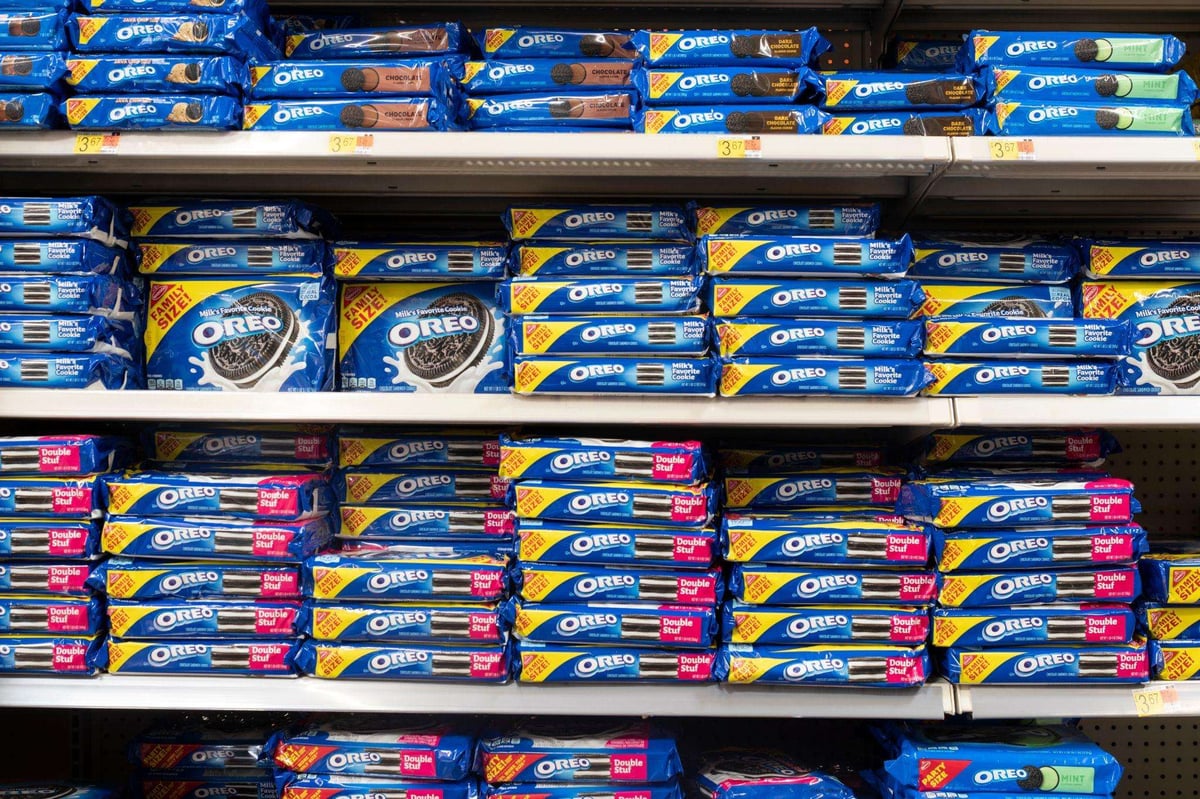.webp?width=1000&height=523&name=lady%20shopping%20(2).webp)
Packaging design has become as much of a science as it has an art in recent years. That’s because data has managed to inform the process and pinpoint what works best. Not only does packaging protect and preserve products, but it also tells consumers about your products and brand and helps the products stand out among others.
When packaging is consistent, it helps tap into a wealth of consumer memories and stories regarding a product that create powerful urges to purchase it again or for the first time after several exposures. Consistency in product CPG packaging is important for many reasons and helps maximize a product’s reach and impact.
- What does research show about why it’s so important to show consistent brand packaging to consumers?
Consistent brand packaging helps consumers identify and remember products in a crowded marketplace. In advertising, it takes five to seven exposures to a product before most consumers make a purchase. Consistent brand packaging helps consumers easily identify a product so they can become more familiar with it and be willing to buy.
It also creates a sense of trust and reliability among consumers, as they’re familiar with the shape, colors, graphics, and other elements of the packaging. Familiarity makes people feel more comfortable, and most people don’t like change. That’s why 90% of package redesigns don’t increase sales.
Consistent packaging helps to increase brand recognition, which ultimately leads to higher sales and profits when consumers associate the brand with positive experiences and feelings. Some consumers will buy from unknown brands, but many won’t take chances, especially if a product has a higher price tag than other products like it.
- Studies have shown that consistent brand packaging leads to higher sales.
A study by Nielsen found that consumers are more likely to purchase products if they recognize the packaging. This study found that when a product had consistent packaging, consumers were 70% more likely to purchase it than they would be if the packaging was different.
A study conducted by the Harvard Business School found that products with consistent packaging saw 10% increases in sales when compared to products with inconsistent packaging. Package consistency conveys brand consistency, which is important to many consumers.
Also, much of a brand’s advertising and packaging targets the subconscious brain. People may not even be aware of why they prefer a particular brand. Familiarity with packaging can trigger the brain’s limbic system in an automatic way, leading to higher sales based on previous experiences with the brand. This trigger will be less likely to occur if packaging is inconsistent.
- Best practices of consistent brand packaging
Best practices include using the same colors, fonts, and logo across all packaging materials and creating a distinct, recognizable style for the product. Changing any of these elements suddenly could throw off consumers’ recognition of the product and create uncertainty in their minds that they may not even consciously recognize. This could lead to them purchasing different products in some cases. If changes are made, one should aim to keep as much consistency as possible, (i.e., changing the font but not the color or logo, or changing the logo, but not the color or font).
Brands should seek to create packaging that stands out from the competition and that’s easy to recognize by using unique shapes, colors, or materials. Using the same (or a similar) color as a competitor product could create confusion and lead to losses of sales rather than gains.
Brands should also ensure their packaging is true to their brand personalities and communicates their values clearly. Brand values have become especially important among younger consumers in recent years. Brands that are consistent in expressing brand values see 23% increases in annual revenue.

- Food brands in the U.S. that do good jobs of consistent brand packaging
Some examples of food brands with consistent brand packaging include Kellogg’s, Coca-Cola, Kraft, Nestle, Hershey’s, General Mills, and Oreo.
These brands have created recognizable packaging designs that are easily identifiable and recognizable, thus creating strong connections between the products and their respective brands. Even store brands of these same products typically use the same colors and packaging types to emulate the brand products and to signal to the consumers what they’re buying.
In a typical grocery store, there are 39,500 items. The average consumer spends less than two seconds looking at a particular product before picking it up (or leaving it on the shelf). Words on the packaging must also be instantly recognizable as there are about 1.3 million written words total on packages in a grocery store.
Product packaging is an important element of any consumer’s overall brand or product experience. Packaging helps a product stand out in grocery store aisles. It also triggers memories about a product and the brand that influence further sales.
The way a product is packaged can even trigger desires on a subconscious level if the package is consistent in its look and signals to a consumer’s brain that the product has been seen. While the science behind packaging consistency can be complex, the impact is simple and real.
PKG Brand Design is always at the forefront of new CPG branding and packaging initiatives. Subscribe to our blog for the latest package design industry news.


-min-1.png)



